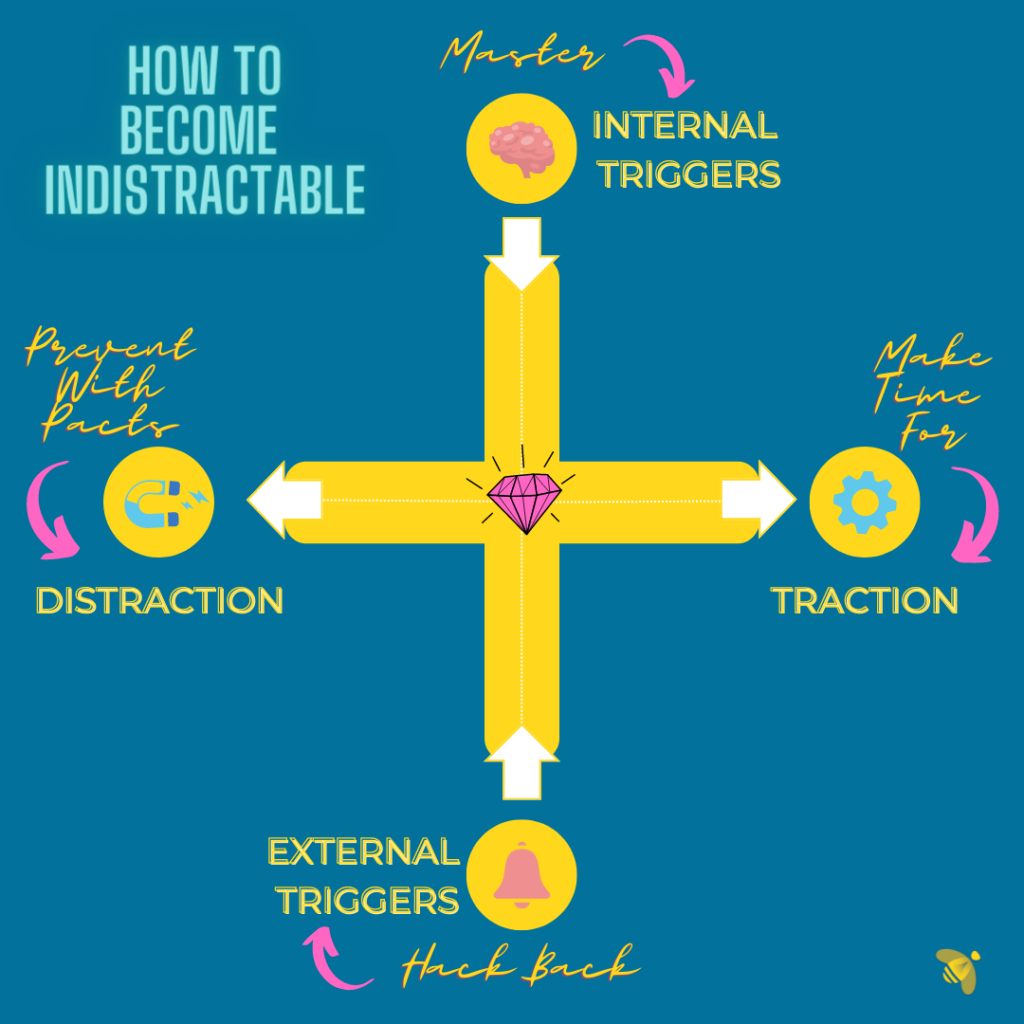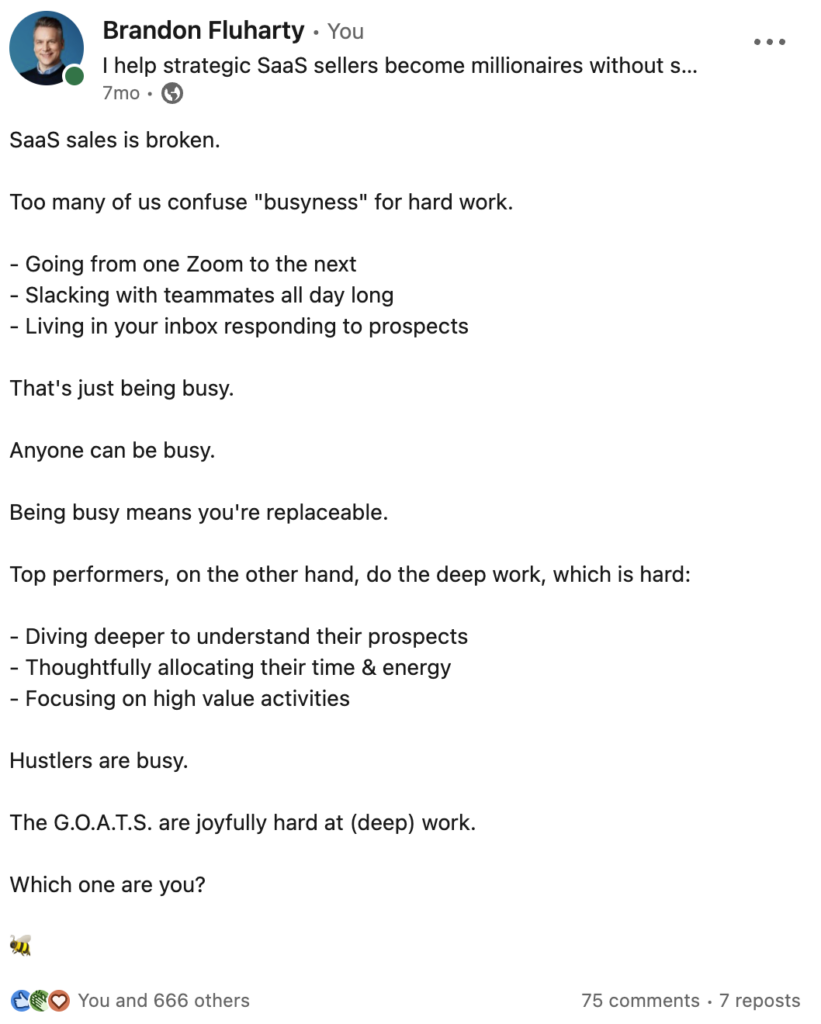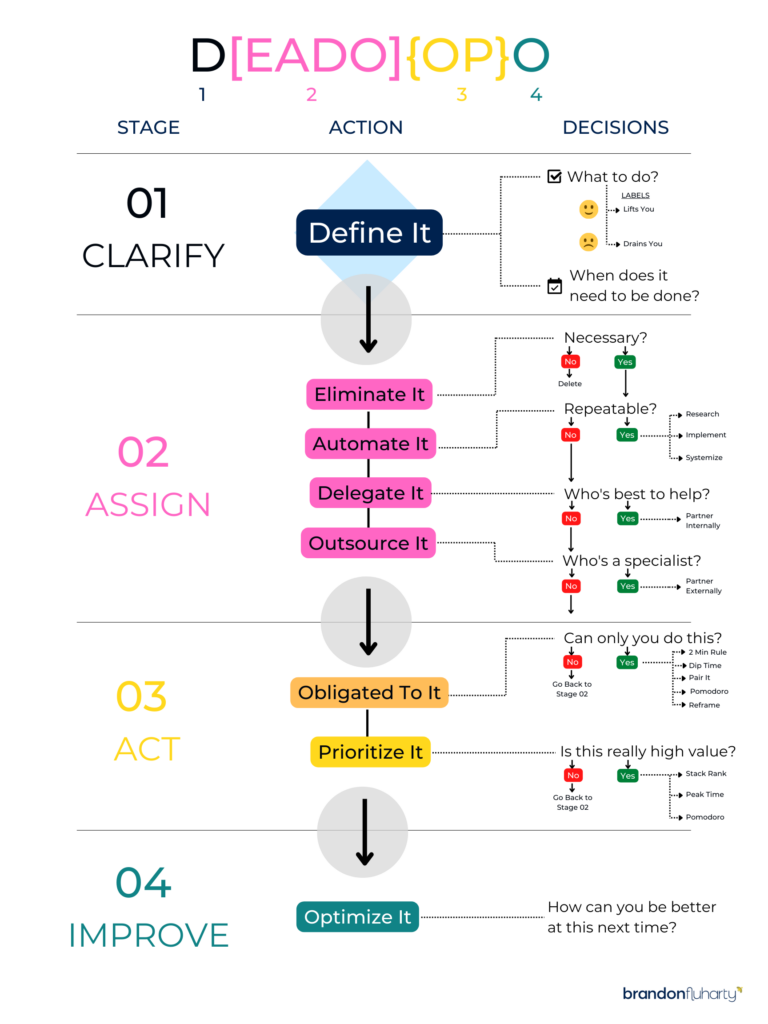⚡️ Today’s level up ⚡️
In this edition, I get into why managing your attention is the final resource in the holy trinity of TEA (time + energy + attention). Then, I share a clear system for better attention management so you can perform at your best each day.
Let’s go!
Read time: <5 minutes
Rethinking attention as an as asset class

Let’s face it, giving your full attention to something for a sustained period of time these days is extremely rare.
Need proof? When was the last time you were able to sit through an entire movie without glancing at your phone?
According to Cal Newport, author of multiple best-selling books (like Deep Work, Digital Minimalism, and So Good They Can’t Ignore You) – there are two essential skills necessary to climb to the top of your field as a knowledge professional:
1. Ability to quickly master hard things, and
2. Ability to produce at an elite level
Both of these skills require focused attention, and that means your attention (when pointed at the right things) is extremely valuable.

Certain art, classic cars, jewels, and other assets are rare too, and when they are, their value increases.
Let’s think of your attention like one of these rare asset classes so that you can protect it and leverage it to its maximum value.
Climbing the attention ladder
In order to derive maximum value from your attention, first you need to fully understand the different types of attention and their influence on your work as a value creator.
I’ve created a simple model to illustrate this concept using a ladder.
Here’s how it works:

At the bottom of the ladder are the burning coals that fuel reactive work.
This, unfortunately, is the default mode for most performance-based knowledge workers, like SaaS sellers. It’s created from myriad factors such as hustle culture, fear-based management, a growth-at-all-costs mindset, and more. Here is where low value is generated and burnout is highest.
⅔ of people don’t keep a calendar or any kind of schedule for their day. The fact of the matter is: if you don’t plan your day, somebody is going to plan it for you. -Nir Eyal
At the top of the ladder are the unique capabilities of intentional work.
This is the rare space where Category of One performers operate the majority of the time. It creates flow state, sublime confidence, supreme command of your craft, and feels like a fun game you get to play each day. Here is where high value is generated and burnout is lowest.
The goal is to focus the majority of your attention each day on the highest rung.
A system for climbing (and staying at the top) of the attention ladder

Image cred: @6posters on Instagram
Here’s how to understand the ladder so you can get to the top – and stay there.
Mastering Level 1: Distractions
The average knowledge professional is interrupted every 11 minutes, causing about 2.5 hours in lost value productivity each day.
As I illustrated in Rethink Time As Money To Make Better Decisions as a SaaS Seller, that is costly over the long arc of a year (For instance, that is costing a SaaS seller who makes $250K an additional $113,636 in annual income).
Further, it takes you about 20 minutes to recover after completing one task to fully focus your attention back to what you were originally working on due to something called “attention residue.”
The book, Indistractable, provides the exact blueprint for understanding why we get distracted and how to remove them so you can focus on the things meaningful to you.
There are 4 parts:

1/ Master internal triggers
What are you trying to be distracted from?
2/ Make time for traction
What are the actions that move you towards the life you want?
3/ Hack back external triggers
What are the things that trigger your distractions?
4/ Prevent distractions using pacts
What are the undeniable ways to hold yourself accountable?
→ Need help? Read my summary of Indistractable (and Getting Things Done).
Mastering Level 2: Emotions
How often are you afflicted with self doubts from inner chatter or frustration when things don’t go your way?
I get it – we’re humans, not robots, so we have to deal with emotions. But…we don’t need to let them control us.
Effective emotional control comes down to proper observance.
Here’s what I mean: A couple years back I was working on a really large healthcare account – what would be the biggest company we ever brought onto our platform – and I was talking with my CEO about its (slow) progress.
He mentioned something to me that I took offense to. I took it as a personal attack on me vs what it really was, a challenge to my limited thinking on how the opportunity could be accelerated.
I took that emotion into other meetings that day, which affected my performance. I dropped the ball on other critical tasks because I was ruminating on my anger and frustration.
The thing about emotions is that they are empty. It’s only when we react to them that we give them substance, and as I illustrated above, that can have a negative knock-on effect to your performance for the rest of the day (or week, month, quarter, or year – depending on how attached you are to that particular emotion).
Something I learned from studying both Buddhism and Stoicism is that I can’t control what happens, but I can control how I react to it. That’s a more masterful way to deal with emotions – process them by observing them with neutrality.
In addition, it’s important that you are well-rested and taking frequent breaks.
When you’re sleep and break deprived, you’re on edge and lack the patience to pause, breathe, and observe the emotion you’re feeling. That makes it hard to view it for what it is – a neutral data point. And forget about it if you add too much caffeine to this dangerous mix.

→ Need help? Read Top Performance Requires Continual Awareness and Care.
Mastering Level 3: Busyness

This is the level of the ladder that a lot of performers spend too much time on, while thinking they are being hyper productive.
However, this is the hamster wheel in action.
Most teams put an emphasis on activity and vanity metrics so that individuals can be managed by a process.
Although it may feel like you’re making progress, you’re essentially treading in place. And too much of that is dangerous territory when the next round of layoffs come.
→ Need help? Check out How To Be A Strategic Seller When You’re Pressured To Sell By Activity
Mastering Level 4: Impact
These are the actions you “get to do” (not “have to do”) because they deliver impact on you personally (interesting, meaningful work) and others (transform your family’s life, transform your prospect’s business, and transform your company’s status).
There are 4 steps to getting here:
1/ Clarify
Define it: What are the things that need to get done.
2/ Assign
Eliminate, Automate, Delegate, Outsource it: The things that drive little value.
3/ Act
Obligate to it: The things only you can do.
Prioritize it: The things that deliver high value and meaning to you and the most important people around you. Structure your day around these.
4/ Improve
Optimize it: High value and something you need to do often? Explore how you can bring improvement to it (even just slightly) each day.

→ Need help? Be sure to snag the above DEADOOPO framework guide and read Ditch The Activity Game And Graduate To The Impact Game.
Next week, I’m going to flip the script on attention and show you exactly how to gain attention with executives using the blueprint I leveraged to win nine 7-figure deals and one 8-figure deal within 4 years (perfect for getting you ready for 2023).
See you then!
🐝
When you’re ready, here are 3 ways I can help you:
1. Get the exact system I’ve used to go from earning $200K to over $1M a year in SaaS sales without burning out here . (Last chance at $77 before price goes up in 2023)
2. Join a community of Purpose-Curious™ sellers in the Make More Hustle Less Club where we develop a personal operating system together here. (400+ members)
3. Book a 1:1 strategy session to map out your best year in SaaS sales here. (My hourly rate increases to $1,000 on January 1st)


